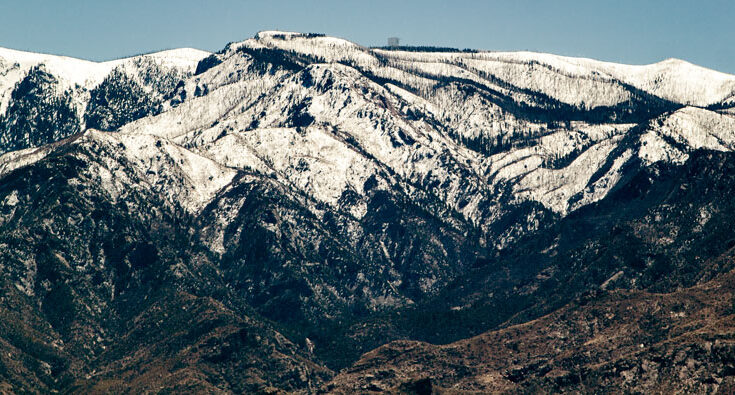Jon Johnson Photo/Gila Herald: The snow-capped Mt. Graham looms over the Gila Valley. A hard freeze warning is in effect for the Gila Valley for Sunday morning, April 7.
Staff Reports
GRAHAM COUNTY – A hard freeze warning has been issued by the National Weather Service for Graham County for Sunday morning from 1 – 9 a.m. Other areas impacted include the Upper Santa Cruz River Valley and eastern Cochise County.
Freezing conditions down to 27 degrees could kill crops or damage unprotected outdoor plumbing.
Protect plants and animals from the cold, and wrap outdoor water pipes, drain them, or allow them to drip slowly.
Hard freezes can be deadly to humans and pets alike. If you’re outside, make sure to find adequate shelter that protects from biting wind and bone-chilling cold. Move indoors if possible.
Hypothermia sets in when a person or animal loses body heat faster than it can be replaced and their body temperature drops below 95 degrees. Symptoms of hypothermia include shivering, lethargy, stiff muscles, slow breathing, and a lack of coordination. More severe symptoms include collapsing or falling into a coma.
Hard freezes can damage unprotected plumbing, including sprinklers and pool and/or spa equipment. To prevent freezing and possible bursting of water pipes, they should be wrapped and allowed to drip the hot water setting slowly. Also, open interior cabinets to allow warm air within the home to easily reach your indoor plumbing.
Those that have in-ground sprinkler systems should make sure they are turned off. Sprinkler systems that turn on during sub-freezing temperatures will create additional and dangerous ice that can be hazardous for both pedestrians and those traveling nearby in vehicles.
Take steps now to protect pets and plumbing from the bitter cold temperatures. Plants and tender vegetation should be covered when temperatures get below freezing. Hard freezes can inflict widespread damage to landscapes and vegetation. The damage from a hard freeze may not be evident until a plant tries to leaf out in the spring, so be patient to see if it’s going to recover.
•Source: National Weather Service







